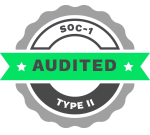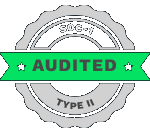Methodology & Standards
BluEnt’s take on methodology extends beyond methods and techniques. We believe in the quality of operations that define our overall success.
Standardization, generally, is the process of establishing standards of various kinds and improving efficiency to handle people, their interactions, cases, etc.
Standards adhered to by an organization help define the quality of their services and products. They can be followed for convenience or according to law or a judicial body.
BluEnt’s attitude towards standards reflects our approach to maintaining industry-leading quality and efficiency in processes.
Service Oriented Architecture (SOA)
SOA is a design for linking business and computational resources, increasing the flexibility of your enterprise.
You may not always correctly predict changing market conditions, but now you can at least be prepared.
Service-oriented architecture concepts are designed to achieve your vision of an agile enterprise, with a flexible IT infrastructure that enables your business to efficiently respond to market changes.
The BluEnt Service-Oriented Architecture maturity model methodology helps users build composite applications that draw upon functionality from multiple sources within and beyond the enterprise to support horizontal business processes.
This approach continues to turn the opportunity for today’s competitive advantage into baseline tools.
With BluEnt’s SOA concepts, you can quickly:
-
Adapt business processes
-
Attract new customers
-
Deliver core competencies to new customer segments
-
Access expert services
-
Reduce costs
-
Focus on your core competencies
American Institute Of Architects (AIA)
The AIA provides a comprehensive portfolio of industry practices from experts the world over. It is an organization working to promote the architectural profession.
AIA best practices represent the collective expertise of AIA members and related professionals. Covering areas such as strategic alliances, client relations and requirements, delivery methods and trends, industry leading practices and more, the AIA best practices are:
-
A compendium of relevant knowledge gained from experience
-
Immediately applicable to a task at hand
-
Distilled to essentials
-
Usable information
-
Linked to related resources
-
Kept relevant and up to date by inviting feedback from practicing professionals
American National Standards Institute (ANSI)
The ANSI has the primary goal of increasing the global competitiveness of US businesses.
It is a private non-profit organization looking to develop voluntary consensus standards for products, services, processes, systems and personnel in the US. The American National Standards process involves:
-
A set of procedures that cover all key processes in a business
-
Consensus by a group that is open to representatives from all interested parties
-
Consideration of and response to comments
-
Incorporation of submitted changes that meet the same consensus requirements into a draft standard
-
Availability of an appeal by any participant alleging that these principles were not respected during the standards-development process
The institute represents the interests of its nearly 1,000 company, organization, government agency, institutional and international members through its office in New York City and its headquarters in Washington, DC.
American Society of Mechanical Engineers (ASME)
ASME is a society of mechanical engineers. It provides guidance on the standards, certifications, and registrations required to compete in the global marketplace.
Its core values include:
-
Embrace integrity and ethical conduct
-
Embrace diversity and respect the dignity and culture of all people
-
Nurture and treasure the environment and our natural and man-made resources
-
Facilitate the development, dissemination and application of engineering knowledge
-
Promote the benefits of continuing education and of engineering education
-
Respect and document engineering history while continually embracing change
-
Promote the technical and societal contribution of engineers
Looking to create a stronger and more well-informed engineering community, ASME partners with organizations around the world to provide convenience and cost savings as an added advantage.
Compatibility Maturity Model Integration (CMMI)
Improve productivity, quality, cost feasibility and customer satisfaction with CMMI principles.
Compatibility Maturity Model Integration is a model with the goal of improving processes. It details what processes should be implemented to facilitate an increase in performance.
CMMI has been adopted across North America, Europe, Australia, South Africa, and South America.
-
Process improvements are applied to business operations. This in turn improves quality of products and services
-
Form lucid links between management and engineering activities and business objectives
-
Ensure that products and services meet customer expectations
-
Integrate experience gained from other areas of best practices
-
Address additional organizational functions critical to products and services
-
Comply with relevant ISO standards
Indian Institute of Architects (IIA)
The IIA works to promote the efficiency of the architecture profession. It provides a directory of chartered practice that seeks to benefit society.
In order to qualify as a ‘chartered practice’, each separate office within a practice that wishes to register must supply evidence of its compliance with certain criteria.
International Statistical Organization (ISO) 9000
Cover key processes and ensure continuous improvement in performance.
ISO 9000, a set of international standards, is maintained by the International Statistical Organization. Some of the requirements include:
-
A set of procedures that cover all key processes in a business
-
Process monitoring to ensure effectiveness
-
Maintaining adequate records
-
Checking output for defects, with appropriate corrective action where necessary
-
Continuous review of individual processes and the quality system for effectiveness
-
Facilitating continual improvement
Proper quality management provides quantifiable advantages with regard to avoidance of errors, sales growth, investment, market growth and competitive advantage.
-
Efficient and effective management
-
Improved customer satisfaction and increase retention
-
Reduced audits and enhanced marketing
-
Improved employee morale and awareness
In today’s service-sector driven economy, more and more companies are using ISO 9000 as a business tool.
Australian Institute of Architects (AIA)
The focus of the AIA (formerly the RAIA, or Royal Australian Institute of Architects) is to improve the built environment by promoting sustainable, quality and responsible design.
The AIA was formed in 1930 and currently has over 12,000 members in Australia and overseas. It values ethical behavior, environment and sustainability, creativity and innovations, social and cultural responsibility and open communication.
Royal Architectural Institute of Canada (RAIC)
The RAIC’s goal is to empower the architectural community of Canada and hence help create a better world. Its national office is based in Ottawa.
They look to strengthen the national framework by increasing their number of allies, partners and fellows.
In order to promote the architectural profession and increase the knowledge and skill in the domain, the RAIC provide grants, technical equipment and teaching aid.
Royal Institute of British Architects (RIBA)
The chartered practices of RIBA seek to drive excellence in architecture, delivering better spaces, a more sustainable environment, and stronger communities. They place a focus on being ethical, environmentally aware, inclusive and collaborative.
RIBA is a signatory to the UNGC and are committed to combating human trafficking and modern slavery through improving practices.
It adopts the following strategies:
-
Demonstrate the benefits of good architecture
-
Promote and enhance these benefits
-
Facilitate the delivery of good architecture
-
Provide high-quality support services
-
Develop the capability to deliver the strategy
Six Sigma
Discover root causes for wastage and errors and eliminate them to improve base line productivity.
Six Sigma is a set of quality control tools developed by Bill Smith at Motorola in 1986, to systematically improve processes by eliminating defects. It is a data-driven and statistical process that finds root causes that improve parts and processes, relationships with customers, and the company’s bottom line.
For the organization:
-
Bottom line cost savings (5%–20% of turnover per annum)
-
Improved quality of product or service as perceived by customers (internal and external)
-
Reduction in process cycle times
-
Development of staff skills
-
Common language throughout the organization
-
World class standard
For the individual:
-
Improved knowledge and skills
-
Ability to use a wide range of tools and techniques
-
A status that is recognized worldwide















